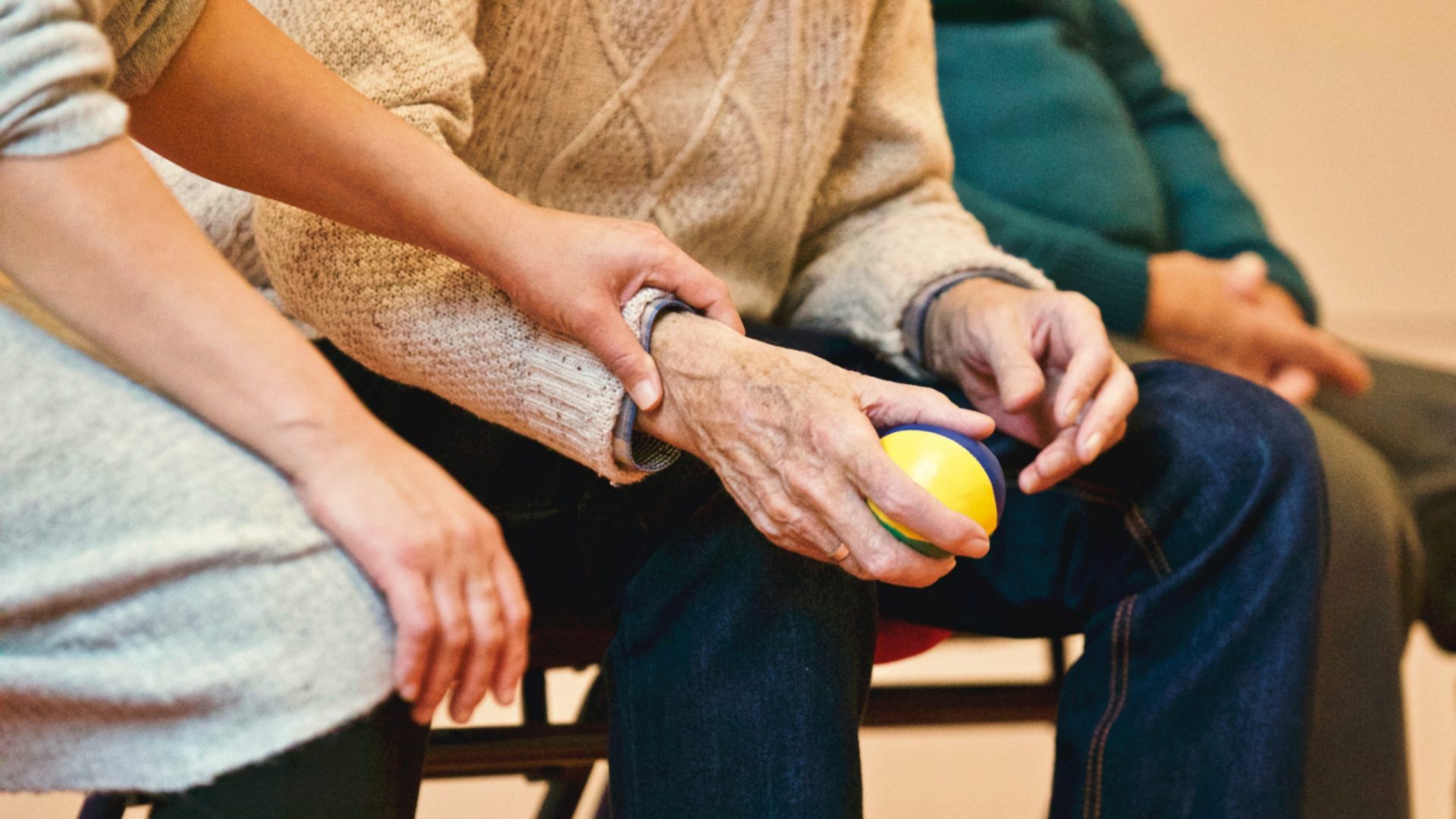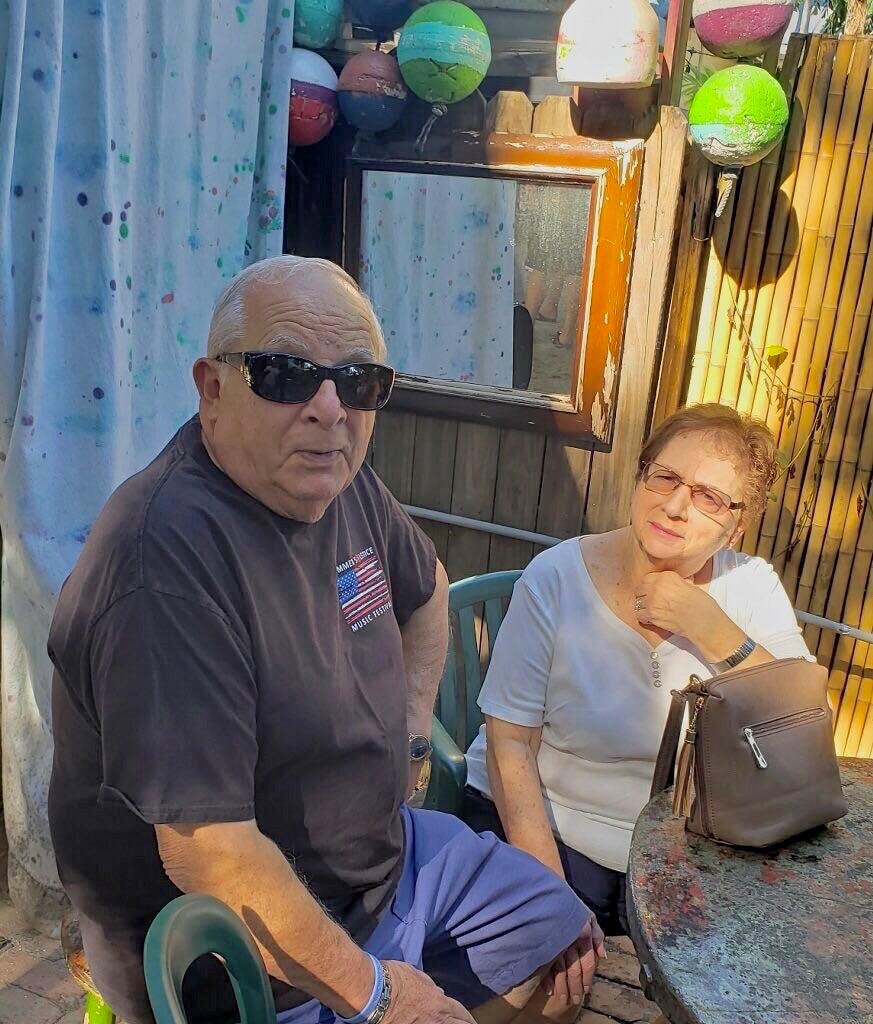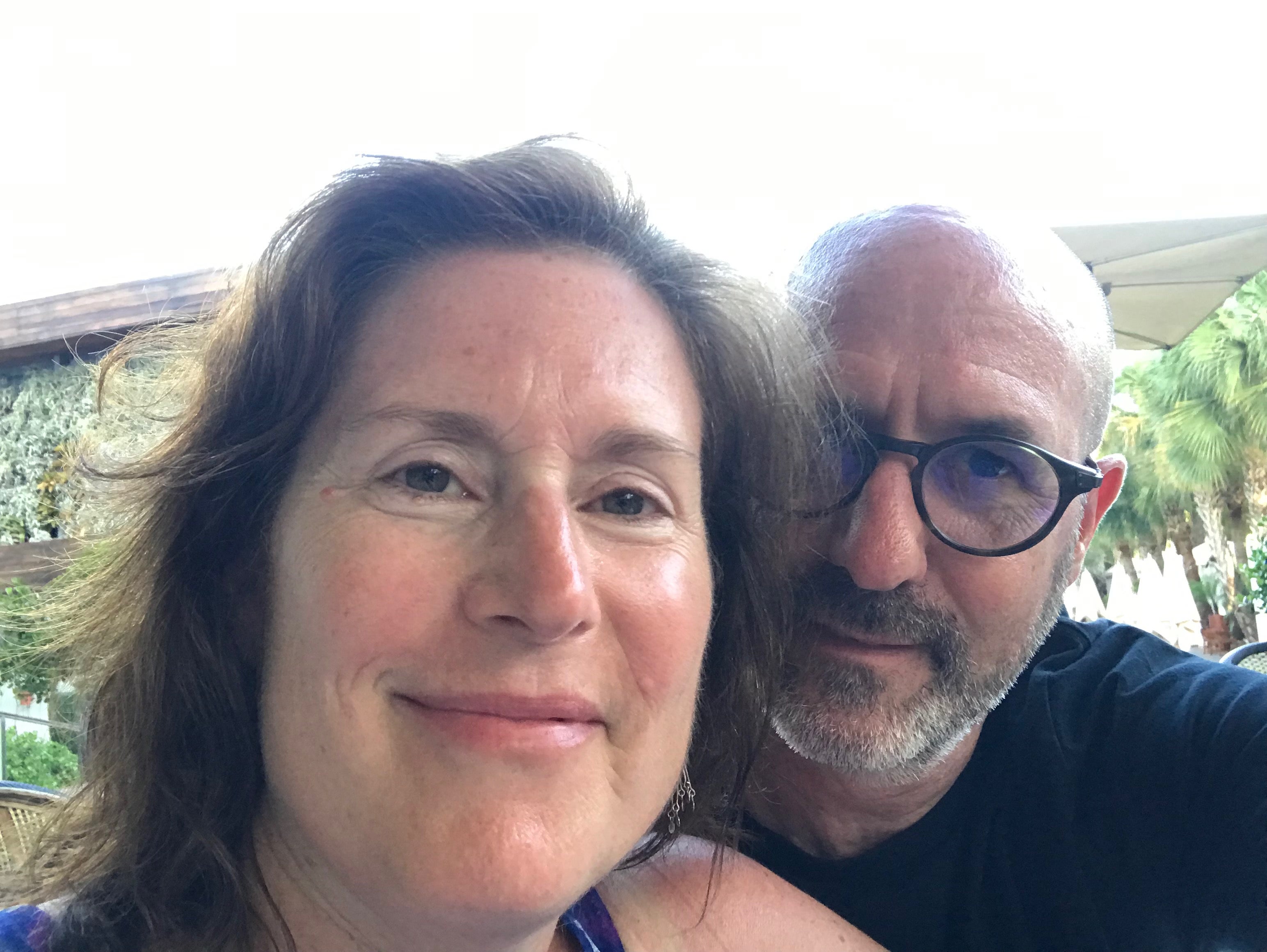
Pennsylvania has one of the oldest populations in the United States and is home to about 126,000 people in nursing homes and assisted living facilities.
Matthias Zomer / Pexels

Pennsylvania has one of the oldest populations in the United States and is home to about 126,000 people in nursing homes and assisted living facilities.
Matthias Zomer / Pexels

Matthias Zomer / Pexels
Pennsylvania has one of the oldest populations in the United States and is home to about 126,000 people in nursing homes and assisted living facilities.
John Stagliano never was much of a hospital guy.
“Anytime he ever went was when something bad happened,” said his son, also named John Stagliano. “I guess he had that, ‘Nothing ever good is gonna be coming from there,’ kind of thing.”
That made it all the more difficult when the elder Stagliano contracted the novel coronavirus at the end of February. At 82, he was statistically at a high risk for the disease to become serious, and potentially fatal. But despite his children’s pleading, he would not be admitted to the hospital.
“He just didn’t want to be there,” said his son John.
So he got his father set up to receive fairly intensive care in the basement of the Exton home the elder Stagliano shares with his wife, Catherine Stagliano. A home health care team through Penn Medicine brought an oxygen machine down to what the family calls the “man cave” and set up an app so his kids could monitor their father’s heart rate, temperature and other vital signs remotely.
For about two weeks, Catherine Stagliano, also 82, trekked up and down the steps to the basement, bringing her husband food and caring for him in the man cave.
Until, predictably, she started feeling sick, too.
For older adults, staying healthy often involves rotating in and out of skilled nursing facilities after an injury, a fall, or a joint replacement surgery. Sometimes, those short-term stays become long-term ones, in the same facility.
If the Staglianos hadn’t made a fuss, they would have likely ended up receiving care in a hospital for COVID-19 and then been discharged to a skilled nursing facility once they were stable — the same facilities that have been ground zero for the coronavirus pandemic. In Pennsylvania, two-thirds of COVID-19 deaths have happened there.
As families watch nursing homes struggle to contain the virus, many have started to consider bringing health care for their loved ones into their own homes.
The trend isn’t new. As the baby boomer generation ages, hospital systems, government agencies and insurers have been shifting long-term care away from costly institutions and toward the home for at least a decade. Many experts predict that the risks posed by COVID-19 may accelerate that process, whether the system is ready for it or not.
The pandemic is already shifting the day-to-day logistics of seeing a doctor.
As soon as models began to predict that hospital systems could be overwhelmed by a surge of COVID-19 patients, the federal Centers for Medicaid and Medicare Services changed its policies surrounding telemedicine, allowing health systems to bill for remote appointments that previously would not have been eligible for reimbursement. That meant more people were able to receive care at home who would have otherwise created crowded hospitals and taken up valuable bed space.
At health systems around the Philadelphia region, doctors started treating more people virtually, at home, for a variety of illnesses, from addiction medicine to cancer treatment — as well as those with COVID-19, like the Staglianos.
“This situation … is shining a much brighter spotlight,” said David Baiada, CEO of Bayada Home Health Care, the largest long-term provider of at-home care in Pennsylvania. “It’s also creating innovation,” such as the remote monitoring of symptoms and increased use of telemedicine.
As people are discouraged from visiting the hospital for routine care, they’re also getting used to accessing it from home and could be more willing to keep doing so even after the pandemic lifts — especially if the loosened Medicare regulations remain in place.
“It’s going to be really hard to go back from that because now we’ve seen that it’s possible to do this and patients like getting telehealth and care at home,” Rachel Werner, head of the University of Pennsylvania’s Leonard David Institute of Health Economics, said of the relaxed telehealth restrictions. “In the next year or two, I think we’re going to find that nursing homes are going to have to close because there just won’t be as much demand for the care that they provide. I think we’ve probably turned a corner on that.”
Penn Medicine went to such great lengths to keep people out of the hospital that by mid-May the numbers of patients being treated at home and in the hospital were roughly the same. Traditional care at home was supplemented with multiple telemedicine visits a day and a lot of communication with family members. Still, said Nina O’Connor, chief medical officer for Penn’s home health care, the model asks a lot of family caregivers.
“At-home care does depend on informal caregiving from family members or friends,” said O’Connor. Though loved ones may have had more time than usual during the pandemic as shutdowns rendered many jobless, there is no guarantee that will continue to make the model sustainable, she noted.
“That is a real barrier, one that we haven’t completely overcome,” she said.

John and Catherine Staglioni, both 82., pose for a photo during a trip to Key West over the Thanksgiving holiday. Both were treated for COVID-19 at home in Exton, Pa. (Provided by John Staglioni)
John Stagliano said he was grateful his parents could remain at home, but he ultimately would have preferred if they had been in a setting where they had 24/7 monitoring.
“If they’re OK, the home care’s fine,” he said. “However, if they start not being able to take care of one another, then it becomes a problem. And all the home health care’s not gonna help you with that.”
While both parents were sick, Stagliano moved from his home in Reading to stay with his brother who lives nearby, so he could make the 10-minute drive to their house if necessary. He is able to work from home, so he had some flexibility. Even so, the care took a toll.
“My stress level was ridiculous,” Stagliano said.
Though the bulk of the residents at any given nursing home may be there for the long term, it’s the patients discharged from the hospital to recover after operations like joint replacements, or short-term illness like COVID-19, that come with higher reimbursement rates. Many nursing homes subsidize the care of their long-term patients through those short-term patients, who stay for just a few weeks.
The operations of nursing homes depend on both streams of patients, but the risks posed by COVID-19 could change both for the foreseeable future.
The notion of shifting more elder care into the home was brewing long before the coronavirus tore through nursing facilities. By 2050, the U.S. population over age 65 is expected to be nearly double what it was in 2012. Pennsylvania is particularly old, with 19% of its population over 65, compared to the national median of 14%.
“There are a lot of old people coming here soon, and we’re gonna have to figure out what to do with that and how to pay for it,” said Kirstin Manges, a national clinician scholar who studies post-acute care for older adults and a registered nurse by training.
Because of the anticipated rising costs that come with caring for more older adults, government officials and health system operators have been thinking about how to reduce the costs of elder care for more than a decade. Plus, people overwhelmingly want to stay at home.
“People express the desire to be able to age in place as much as possible, in their homes and in their communities,” said Kevin Hancock, deputy secretary of the state Department of Human Services’ Office of Long-Term Living. “That view has underwritten the development of long-term care services really for about the last 25 years.”
However, Medicaid-funded care through Social Security was initially set up to pay for nursing home stays, not care in the community.
Nationally, 87% of state Medicaid spending on long-term care went to nursing homes in 1990, according to a report from the Kaiser Family Foundation.
That started to shift after the passage of Americans with Disabilities Act in 1990. Lobbyists and advocates continuously made the point that home care is safer, more humane and more cost-effective than institutionalized long-term care.
The industry has adapted to challenges: Stymied by a limited stock of ADA-compliant housing, home health and government agencies have expanded their scope to focus on housing development, too. Philadelphia-based Liberty Resources has built 103 units through its own development arm, and priority is given to individuals transitioning out of nursing home care.
Pennsylvania has come a long way. By 2018, the state Department of Human Services had launched Community Health Choices, a program to codify and streamline community care for people with disabilities over age 21 and seniors who received Medicaid. The state also has a department dedicated to transitioning individuals out of nursing home care into their homes.
In Pennsylvania, 62% of the people now drawing those federal funds for long-term care receive that care outside of a nursing home. The funding is now split around 50-50, between institutional and community-based care.
Preliminary numbers for January through April of this year do not show an increase in the number of people moving out of institutional settings compared to previous years, so it’s too soon to know whether the pandemic will accelerate that shift.
For those who need intensive care, or don’t have family members to care for them, there will always be the need for some skilled nursing homes. Those same homes also care for people discharged from the hospital after an operation or injury.
Some experts worry that if too much funding shifts toward home care, that could gut already cash-strapped nursing homes, which could create an imbalance for those stuck there — who are more likely to be poorer residents and people of color.
“Are we taking precious resources that may be appropriate and needed for some patients and giving them to wealthier patients, which leaves less resources for those who are [on] Medicare or Medicaid?” asked Manges.
The decision to put a loved one in a short-term facility is a lot more complicated because of the coronavirus pandemic, which has touched the majority of skilled nursing facilities in the state.
“I think nursing homes as we know them are over,” said the Leonard Davis Institute’s Rachel Werner.
Yet the incentives are still strong for hospitals to continue sending people to skilled nursing facilities.
The Affordable Care Act created financial bonuses for hospitals that reduce readmission rates 30 days after patients are discharged, in an effort to improve the quality of care and reduce billing costs. In part, that led to a dramatic increase in post-acute care as a way to transition people who are still sick enough to need services out of the hospital, with less risk that they’ll need to come back.
“It takes a lot more work to make sure that patients are safe enough to go home and to arrange home health services,” said Manges. “Where, as [skilled nursing facilities], you can partner and create these preferred networks. So from a health systems standpoint, it’s a lot easier to just transfer them to the SNF that they know, and defer that risk financially for them and not have to carry potentially a penalty for readmission.”
But placing patients in nursing homes is expensive, especially because some patients who may go to a skilled nursing facility for a short period to recover from a stroke or a joint replacement may end up staying there long term.
Because much of that care is paid for by Medicare, the taxpayer foots the bill.
“We all pay that cost,” said Manges.
Experts say that for home health care to become a sustainable option in the short and long terms, pay rates for staff would have to increase. Recruiting enough home health aides is often difficult, and the work requires long hours.
“I’ve thought about signing up for home health, but I don’t wanna have to physically drive to each site, and bring all my gear with me,” said Manges. “So a lot of your nurses who are used to working in more resourced accessible areas, it’s really hard to make that transition to home care — especially for the pay.”
According to the Bureau of Labor Statistics, the average pay for a home health aide is $11.57 an hour.
‘What happens if something goes wrong?’
It’s hard for researchers to track whether older adults recover better in a nursing home or at home because there are so many variables to consider: insurance type, severity of the patient’s condition, type of nursing facility. A 2019 studypublished in JAMA Internal Medicine found that among post-operative hip replacement patients, hospital readmission rates were higher among those who recovered at home, but the cost of caring for them was lower. There was no discernable difference between mortality rates of the two groups.
But for some families, the variables being weighed aren’t so black and white. It’s more about what seems safer, and how to feel most in control.

Peter Foster and his wife, Dru, of Fishtown, opted for home care when COVID-19 began affecting nursing homes and rehabilitation facilities. Dru suffered brain damage as the result of a heart attack after this photo was taken and she requires intensive care. (Provided by Peter Foster)
Peter Foster’s wife, Dru, had a heart attack while jogging in October 2019. Her brain was deprived of oxygen, and she suffered brain damage that left her initially unable to move or speak.
After Dru’s condition stabilized, she entered a series of intensive rehabilitation facilities, where her mobility slowly improved and her speech began to return. She needs help getting out of bed, and has had to work up the stamina to sit in a chair.
Through it all, Peter visited her all day, every day. Then, he said, “COVID came into the world.”
Dru’s rehab facility banned visitors, so Peter’s daily check-ins became virtual. Aides in the facility would turn on FaceTime and leave an iPad by her bedside.
While Dru was still receiving treatment, “she started going backwards mentally,” he said. Her speech regressed. Feeling helpless and distant, Peter made the call to move her into their home in Fishtown.
“It was scary [at] moments, making that decision, is it the right decision,” he said. “She can tell us she doesn’t feel right, she can tell us she feels weird, but she can’t really tell us how or why.”
During the day, two home health attendants with Bayada come to the house to help — much less support than at the step-down facility. At night and at home, it’s just Peter.
“It’s just the fear, the middle of the night … what happens if something goes wrong?” he said.
After she left the facility, a COVID-19 case was confirmed on Dru’s floor – it seemed as if she may have gotten out just in time.
For Peter and Dru Foster, who are in their 50s, “there’s no going back” to a long-term living facility, he said. At some point, Dru may need more intensive physical therapy in a rehabilitation facility, but she wouldn’t live there.
“The fact that I can run down during a work call, and spend some time with her, give her some hugs and kisses, and bring her some food or just spend time with her … is huge,” he said. “I never look back with any regrets whatsoever that we’re home.”
Last month, they celebrated their 29th wedding anniversary.

Get insights into WITF’s newsroom and an invitation to join in the pursuit of trustworthy journalism.
The days of journalism’s one-way street of simply producing stories for the public have long been over. Now, it’s time to find better ways to interact with you and ensure we meet your high standards of what a credible media organization should be.